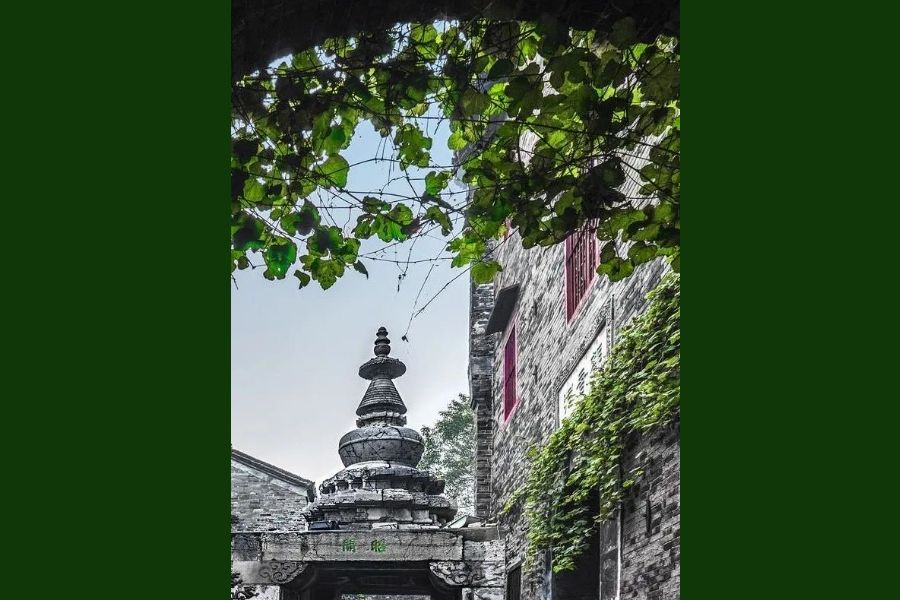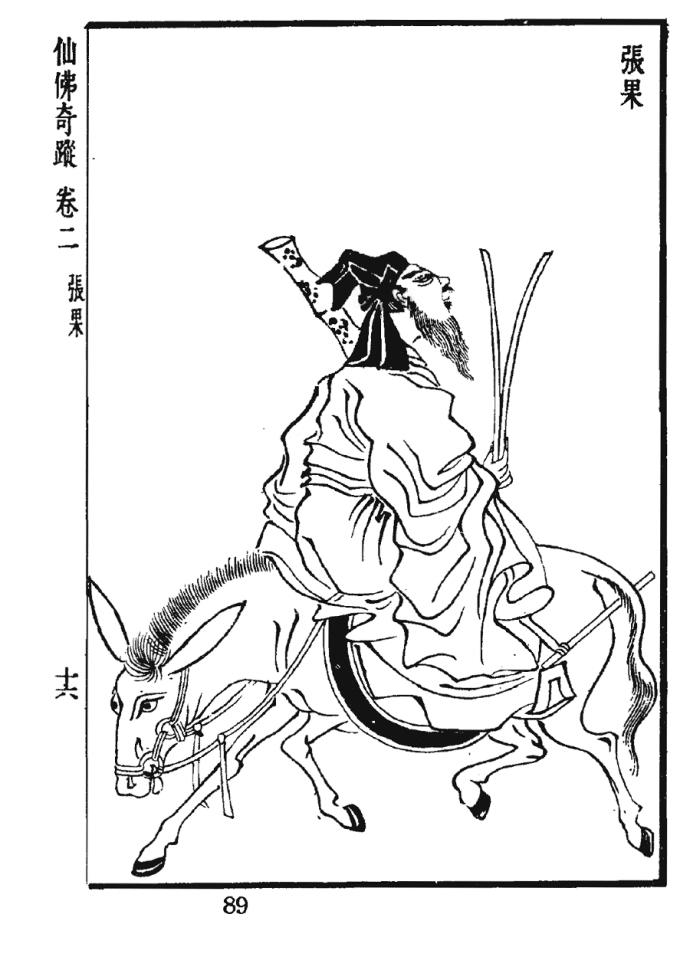A Chinese deity and a ham jelly with a 300-year-old history

One morning when I was in Zhenjiang in Jiangsu province, my friend drove over to my place, asking me to get ready for breakfast.
"It's so early, what can we eat?" I asked.
"Pot-lid noodles (锅盖面), crab roe soup dumplings, and xiaorou (肴肉, ham jelly)," he replied.
Ah, the mention of so many delicious dishes instantly whetted my appetite. Especially when I heard that we were also going to eat xiaorou, all the wonderful memories I had of it piqued my taste buds. It was as if a gardenia flower bloomed in my mouth and its sweet fragrance travelled up my throat and nostrils, perfuming my mind.
I sometimes think, apart from stimulating our taste buds, the peculiar thing about taste is that it can create hallucinations. This is just like a writer using a stream of consciousness to intersperse childhood memories with imagined time travels, or, when a chef gets his flavours just right, mixing in the sweet, bitter, sour, salty and umami of his life experiences as he cooks.
Adventurous outing
When I was less than ten years old and probably in primary three or four - I forgot what the exact occasion was - Father brought me to have some soup dumplings (小笼包) at a small restaurant in Taipei. He also ordered a dish called xiaorou.
"What is xiaorou?" I asked. Father pointed to the dish on the menu. Eh? I recognised the word - yao as in caiyao (菜肴, a dish). Was it a heteronym (a word with a different pronunciation and meaning but the same spelling)?
Father explained that xiaorou is a type of cured meat that is not cured with salt but with saltpeter (硝 xiao, potassium nitrate). The dish should be called 硝肉 (xiaorou), but because saltpeter is poisonous, people might think that they would be poisoned if they ate the dish, so the word 肴 (yao) is used instead. So even though the dish is labelled as 肴肉 (yaorou), it actually retains the pronunciation of 硝肉 (xiaorou).

Soon, our xiaorou arrived. The rectangular meat slices looked like thick blocks of dominoes lined up on the white porcelain plate. The meat was bright red with spots of pink. It looked delicious, but was it poisonous like the brightly coloured toxic mushrooms that are nice to eat but give you a tummy ache after? Father said that after the xiaorou is cured with saltpeter, it is thoroughly cleaned and completely safe to eat.
The xiaorou before me was light pink or almost rouge in colour. Finely chopped matchsticks of ginger topped the dish like a silk bow adorning a young girl's dress - what a beguiling sight. I dipped a slice of ham jelly into some Zhenjiang vinegar and put it in my mouth. Ah, it was like ice-cream, melting into a savoury goodness. Father asked with a smile, "It's delicious, right?" I was too busy to answer and kept nodding my head. I never forgot the delicious taste of xiaorou from then on.
Ah, a deity had come down to earth! Even immortals loved to eat xiaorou! From then on, the people of Zhenjiang started making xiaorou, which became a unique Zhenjiang specialty.
An error made good
It is said that xiaorou was created over 300 years ago in Zhenjiang as a result of an oversight in the meat curing process. Workers had used saltpeter (used in gunpowder) as salt when curing the meat and only discovered the mistake the next day. While they did not dare to eat the saltpeter-coated ham, looking at the sheer size of the meat, dumping it would have been a waste as well. Thus, they washed the meat several times and simmered the meat in a pot filled with green onions, ginger, star anise and yellow wine, in an attempt to remove the toxicity of saltpeter. After the meat was cooked, it became a crimson red colour and was very fragrant, but nobody dared to eat it.
Then, a white-bearded elderly man came to the shop and said, "This meat is so fragrant, I would like to have half a catty." The store owner said, "You may not know this, but this meat was cured with saltpeter. We don't know if it's safe to eat." He replied, "It's alright. I'll just have it with some tea and it should be fine. Everyone is here. They can be my witnesses. If anything goes wrong, it's not your fault."

Sipping tea and eating meat, the old man soon finished whatever was on his plate. Craving for more, he asked for the remaining ham to be served as well. Everyone crowded around him and watched him eat, not knowing what would happen in the end. The old man wolfed down his food, leaving behind an empty plate. He put down some money on the table, blew a whistle, and out trotted a donkey. The old man rode on his donkey backwards and was gone like the wind. It was then that the people at the store realised: that old man was Zhang Guolao (one of the Eight Immortals). Ah, a deity had come down to earth! Even immortals loved to eat xiaorou! From then on, the people of Zhenjiang started making xiaorou, which became a unique Zhenjiang speciality.

Traditional foods and legends live on
Sitting in a restaurant at the Zhenjiang Xijin Ferry site and eating the heavenly xiaorou, I couldn't help but think about what happened 300 over years ago when Zhang came to Zhenjiang. It was right at the turn of the Ming-Qing dynastic transition. Qing troops were heading southwards and the land was in turmoil. Life was tough and the people fled for their lives. Perhaps the store owners had secretly kept saltpeter to make gunpowder so as to fight back against Qing soldiers crossing the river.
Across the Xijin Ferry is the vast and magnificent Yangtze River flowing eastward. To the north of the Yangtze River lies Guazhou Ferry (瓜州渡). It stands near Yangzhou, an important city that minister, general and calligrapher Shi Kefa had defended against an attack by Qing troops. Amid the rabble of history, it is as if the cries of the people and the horses can still be heard.

Did Zhang leave on his donkey after finishing his plate of xiaorou because he could not bear to listen to the helpless cries of the victims of the Yangzhou massacre and could not bear to watch people paying respects to Shi's cenotaph at Meihualing (梅花岭, lit. Plum Blossom Ridge)?
The spectre of what happened 300 years ago has long faded. Business is booming at the restaurants along the Yangtze River today. Amid the bustle of the busy city, shoptalk about stock prices and the real estate market forms part of the chatter. And surprise, surprise, a plate of crimson red xiaorou is on every table.
